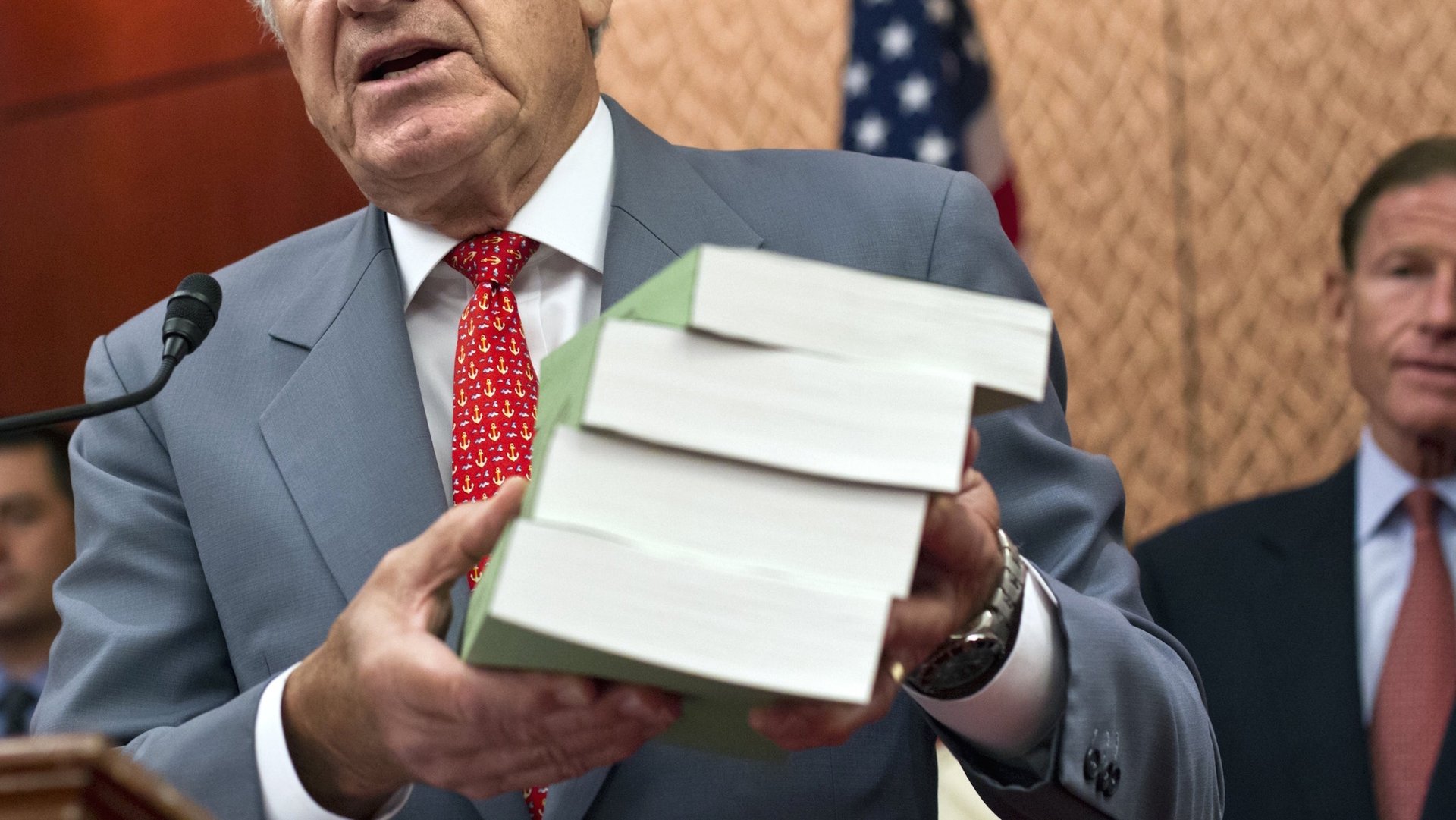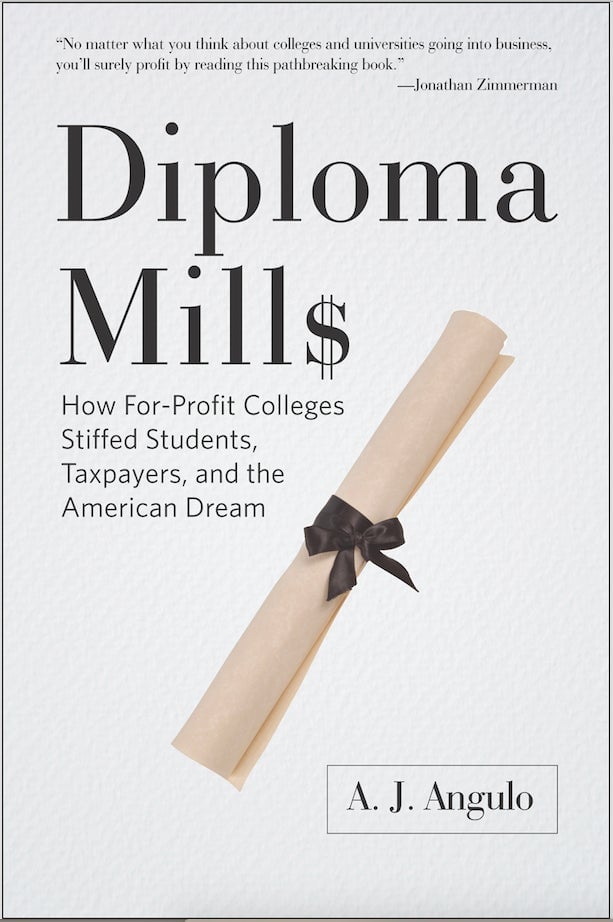For-profit education is a $35 billion cesspool of fraud—and the US government has let it fester
It may have taken a while, but things are finally starting to unravel.


It may have taken a while, but things are finally starting to unravel.
The US government is intensely scrutinizing for-profit colleges, many of which stand accused of stealing federal dollars, preying on low-income students, and falsely reporting job placements, among other deceptive practices. Big names like ITT Tech, DeVry University, and the University of Phoenix are all being called to account. The 107-campus Corinthian Colleges stumbled to its end last year.
Corruption in for-profit education is hardly new, and the recently retired US education secretary Arne Duncan says the biggest regret of his tenure is not cracking down on its “bad actors” sooner.
The question is: Why didn’t he—or anyone?
“There’s been a serious gap in our understanding about where these institutions came from and how they’ve developed over time,” says Winthrop University history professor A.J. Angulo, who calculates the size of the industry, based on government documents, to be over $35 billion.

Angulo traces the surprisingly long legacy of for-profits in his new book, Diploma Mills: How For-Profit Colleges Stiffed Students, Taxpayers, and the American Dream. Schools that operate around profit have indulged in unscrupulous practices since as far back as the 18th century, Angulo argues. Diploma Mills calls out all those practices, as well as the institutions that’ve let them slide for so long. Quartz spoke with the author for a look at the myriad of tensions involved.
QZ: Why’s it important to look back at the history of for-profits?
Angulo: Right now, we have a great deal of literature from economists and political scientists and sociologists who offer case studies from the 1990s onward. But there’s been very little on the historical evolution of how these institutions came about. When I was looking through the 2012 Senate investigations, I saw these startling documents—four-volume, multi-thousand-page studies on for-profits in recent history—and I got to thinking I’d like to put it in historical context.
I started to look back, and… nothing. I ended up writing the book I wanted to read: something to understand the framework of the institution, to contribute a historical perspective we didn’t have.
And what does that historical perspective reveal?
I can boil it down to one key statement: I believe the profit motive has ultimately made it very difficult for for-profit institutions to live up to academic and professional standards. There’s an inherent conflict. Throughout this story, I saw it again and again: These institutions might initially mean well, or be fulfilling a service not being provided, but they end up cutting corners.
We could go back to 400 BC, with Socrates talking about merchants of knowledge. He said charging students for lessons would make people end up tailoring their lessons to what students most want to hear, rather than what they most need.
If you’re dependent on quarterly profits, tuition revenue, if your main goal is to [impress] investors, this distorts the fundamental purpose of higher education.
So, given that most for-profit colleges deliver an inferior product, how have they managed to stick around for so long?
In a nutshell: advertising. For-profit education has managed to make a case for itself by investing enormous amounts of money in advertising—and non-profits don’t. They’re able to very effectively market themselves, whether or not they’re worthwhile. And until very recently, because of arbitration clauses, even when students do discover they don’t [deliver as advertised], they haven’t even had the ability to bring it to court.
Who are the players involved? How have they allowed for-profits to continue deceiving students for so long?
There are three main institutions making it possible for these schools to run: accreditation agencies, which right now are outsourced to the private sector; states, which monitor and approve these institutions; and federal agencies like the Department of Education. It’s a three-legged stool that’s used to ensure quality.
But too much of the government is in bed with lobbyists. Arne Duncan says his biggest regret is not being hard enough on the for-profits—but he’s saying it on his way out, just like Ben Bernanke said we weren’t careful enough with the banks on his way out. [It’s clear] the regulatory arm isn’t doing its job.
And accrediting agencies… For-profit executives sit on the boards of these accrediting agencies. I can’t think of a bigger conflict of interest than evaluating your friend who’s doing the same thing you are, then being evaluated by them the next time around.
There are silver linings. The best example is Elizabeth Warren‘s Consumer Financial Protection Bureau, which has been an enormously successful agency bringing action against deceptive for-profits.
Why don’t people care more? Have scandals in the past just not been big enough?
They’ve absolutely been big enough. But I don’t think we have a very strong historical consciousness in this country, and that’s coupled with us being very optimistic as a people.
In many ways, American culture is a very can-do culture. We have this faith in innovation and progress and efficiency—that we can do things faster, cheaper, better. This enormous faith has allowed for-profits to continue to survive. We have faith in the regulators. We have faith in accreditation. We have faith in progress and the idea of, “Well, that’s already been litigated, right, haven’t we already taken care of that?” And this tells us sometimes we have too much faith.
In the end, as I portray in the book, we cannot get away with cutting corners on standards. When an institution is spending 500% more on advertising and dividends than instruction—that’s cutting into student opportunities for learning, and it’s cutting into quality education.